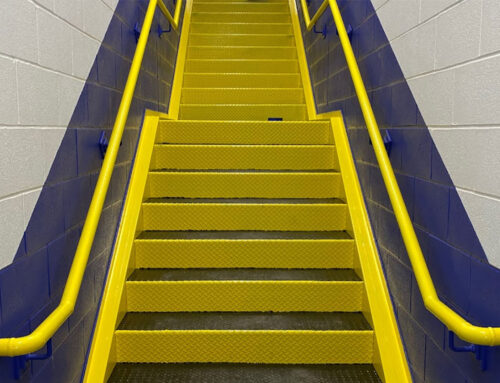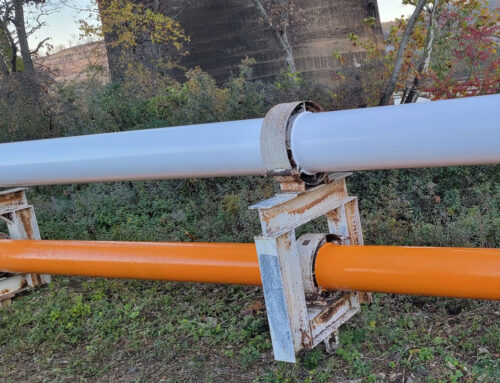Everything You Need to Know About Soluble Salt Testing
Chloride and sulfate salts slowly destroy steel surfaces and, if left undetected, lay beneath industrial coatings, rapidly causing corrosion. To find these soluble salts, industrial painters use a Bresle Test to determine how much is on a surface. Here’s a breakdown of what soluble salt testing is, how it’s performed, why it’s not a common practice, and why our industrial painters think it should be.
How Soluble Salt Testing Is Performed
According to the Institute for Oil & Gas Sector, industrial painters use a Bresle Test kit: conductivity meter, syringe, beaker, bresle test patch, cleaning and calibration solutions, and distilled water. We first clean the conductivity meter’s electrode and check its accuracy. Then we place the Bresle Test patch on the substrate’s testing surface. We decontaminate the syringe and beaker, filling it with distilled water and obtaining the water’s blank value with the conductivity meter.
We draw 2.5 milliliters into the syringe and inject it into the test patch at a 30-degree angle, leaving the needle inserted under the patch. We tap the patch exterior for one minute, rest for two minutes, and then use the syringe to redraw and again inject the water. This procedure gets done upwards of four times.
We use the syringe to extract as much of the remaining water as possible, then remove it from the patch and inject it into the conductivity meter’s electrode. We compare that measurement minus the original blank value we obtained at the beginning of the test gives us the substrate’s salt level in micrograms per centimeter. Each coating specification will detail an appropriate range of salt levels the test should yield.
Why Soluble Salt Testing Currently Isn’t a Common Practice
Though the Bresle Test provides valuable insight, there remains some industry resistance to using it as a common practice before coating. Why?
The cost of a Bresle Test can vary greatly, depending on the size of the coating project. Typically the larger the project, the more samples need to be collected. Often, we’ll use the services of a third-party laboratory to analyze the results.
Soluble salt testing also adds more man hours, which can conflict with time-sensitive coating projects.
The Bresle Test doesn’t detect which salts (i.e. sulfate or chloride) are present, meaning there isn’t meaningful data about the source of the problem.
Why the Industrial Painters at Eagle Eye Services Think It Should Be
Without detection of surface salt levels and their subsequent removal, salt stays on the substrate and becomes encased under the new coating. The salt not only accelerates the corrosion of the substrate beneath the coating but also contributes to coating failure.
Many industrial painting companies rely exclusively on abrasive blasting to remove salts. We believe this is a mistake because abrasive blasting does not remove unseen, soluble salt from a steel substrate. Our industrial painters conduct soluble salt testing after surface preparation and before dust removal and coating. This important step helps us to ensure the best possible outcome for our industrial coatings.
Don’t allow salt to corrode your industrial business. Schedule your free on-site assessment today.
Ready to Get Started?
Have questions about your project or need a quote? We’ve got someone ready to help you.



